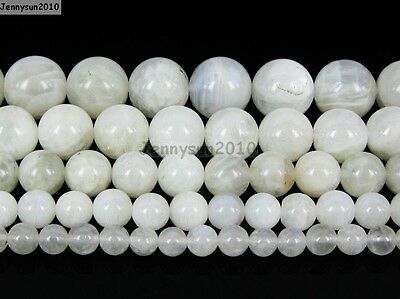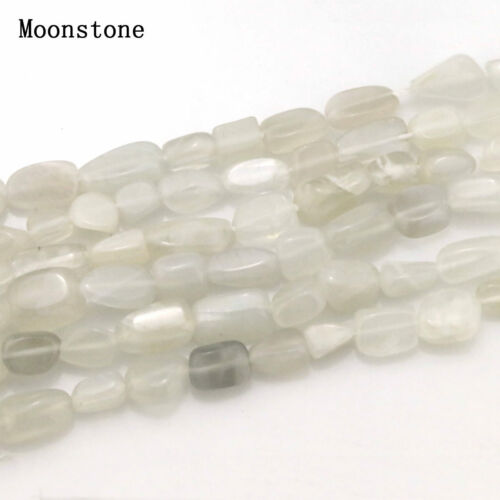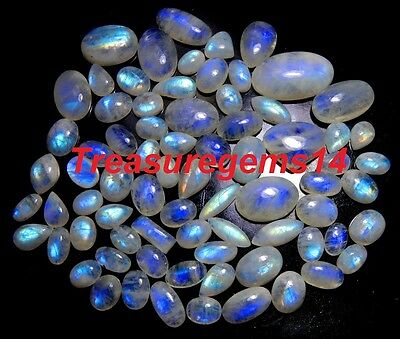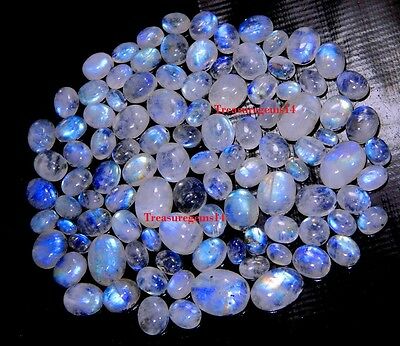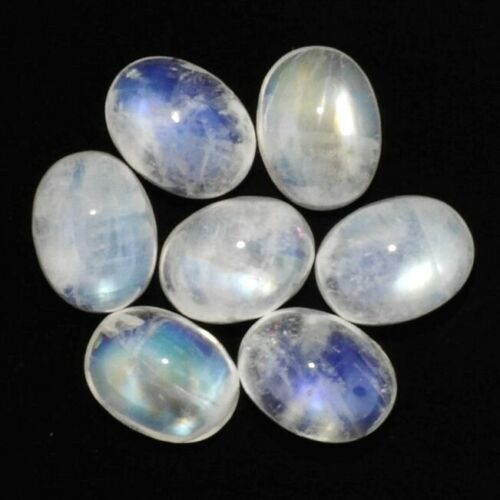-40%
7.22 cts Huge Natural Square-Cabochon Transparent Blue-flashing Moonstone
$ 180.57
- Description
- Size Guide
Description
7.22 cts Huge Natural Square-Cabochon Transparent Blue-flashing MoonstoneNew without Tags. This gem has never been used/placed/set in a setting.
It is utterly undamaged, unmarred and in perfect condition as expected of NWOTags.
I have included a Moonstone article below for your appreciation and enjoyment.
Summary of below:
"Moonstone can be identified by the presence of adularesence. Other gems with a similar appearance do not have the phenomenal presence of adularesence which makes identification of moonstone fairly easy." ... "Top quality moonstone can show an incredible "three-dimensional" depth of color, which no other gemstone can replicate, making moonstone almost unmistakable." ... "Moonstone is not known to be treated or enhanced in any way, but there have been reports of bright blue moonstones being 'coated' for color-enhancement."
Type: Natural Blue Moonstone
Color: White transparent w/Blue Flashing
Shape: Cabochon (square)
Dimensions: 10.98mm x 10.96mm x 5.87mm
Weight: 7.22
cts
Luster: Gorgeous
Clarity: Transparent but w/Blue Flashing
Hardness: 6.0 rating on the Mohs Scale
Treatment: Not Heated, Not Coated, Not Treated
Origin: Sri Lanka
Ahh, I think I saw a Blue Flashing something...
Who are you going to call?
Ghost-Busters !!
We are an eBay eStore enterprise focused on selling mostly Loose Natural Gemstones. Stay here, look around and learn. Via eBay Messaging, ask us questions, make an offer, and otherwise discuss your wishes, concerns and hopes. We pride ourselves as good-spirited folks having fun and doing our best to share the joy of Nature's most beautiful and enduring literal treasure -- Natural Gemstones. Expect to find us cheerful and trustworthy, and we will expect the same of you. For us, Negative FeedBack as a means of coercion is never needed and only degrades everyone's enjoyment in what should otherwise be a fun shopping experience. And finally, please enjoy my work as eBay's First (unofficial) Gemstone Poet. -- gemgym
========================================================
Moonstone Gemstone Information
Moonstone - History and Introduction
Moonstone
is the most well-known gemstone variety of orthoclase feldspar, a potassium aluminum silicate. It is a transparent to opaque oligoclase, a variety of plagioclase albite and sheet mica.
Moonstone
is known to exhibit a distinct sheen under certain lighting conditions, and it is the sheen which renders moonstone one of the most remarkable gemstones available today. In fact, its name is owed to the almost magical, bluish white shimmer it exhibits, which closely resembles that of the moon. Gemologists refer to the shimmering phenomena as 'adularesence'.
The optical effect of adularesence is a result of moonstone's unique structural pattern. Tiny inclusions of albite, a sodium aluminum silicate are intermixed with host rock layers of orthoclase, a potassium aluminum silicate. The alternating layers of different feldspars form a lamellar (scaly) structure which causes the interference of light as it enters the stone. Thin layers of alternating silicates tend to refract more attractive and colorful sheens, whereas thick layers of silicates produce less attractive, white to colorless sheens. As light enters the stone, it is refracted and scattered, producing an extremely unique and attractive play of both color and light. With moonstone, the aura of light actually appears to glow from deep within the surface of the stone.
World-famous Moonstone
Moonstone was extremely popular in the times of "Art Nouveau", which took place more than 100 years ago. It was used to decorate a striking amount of pieces of jewelry created by the famous French Master-Goldsmith, René Lalique, as well as many of his contemporaries. His rare pieces are typically only found in museums or in well-guarded private collections.
Natural Moonstone
Identifying Moonstone
Moonstone can be identified by the presence of adularesence. Other gems with a similar appearance do not have the phenomenal presence of adularesence which makes identification of moonstone fairly easy. Moonstone is a potassium aluminum silicate and can be easily identified by composition. Many similar materials, such as labradorite, are actually plagioclase feldspar, whereas moonstone is by composition a potassium feldspar. Testing for hardness is often one of the easiest methods for distinguishing moonstone from other materials. Other similar gems, such as opal, chalcedony or ammolite, are significantly harder or softer than moonstone. Top quality moonstone can show an incredible "three-dimensional" depth of color, which no other gemstone can replicate, making moonstone almost unmistakable.
Moonstone Origin and Gemstone Sources
Moonstone deposits are often found as constituents in feldspar-rich granitic and syenitic pegmatites all over the world. The most important moonstone deposits are from Sri Lanka and India. Other notable sources include Australia, Brazil, Germany, India, Myanmar (Burma), Madagascar, Mexico, Norway, Switzerland, Tanzania, and the United States. Sri Lankan moonstone is most famous for its attractive blue colored material, but blue moonstone is becoming increasingly rare. India is known for producing fine '
rainbow moonstone'.
Switzerland's Adula Mountains possess the most historically interesting moonstone mines.
Buying Moonstone and Determining Moonstone Value
Moonstone Color
Moonstone
is typically colorless, but it can occur in a wide range of colors, including gray, mocha brown, yellow, orange, green, pink, blue and white. It most often exhibits a white to bluish-white sheen, but other sheens can occur such as silvery and blue-orange. Sri Lanka's moonstones with a pale blue sheen on a near-transparent body are considered most valuable. India's moonstones show cloudlike plays of light and color which are very valuable including beige brown, green, orange or simple brown. Rarer colors include blue, peach, smoke, champagne, black and red.
Moonstone Clarity and Luster
Moonstone typically occurs with translucent clarity. Transparent specimens are uncommon, but not unheard of. Transparent moonstone is considered most valuable. Moonstone has an attractive vitreous to pearly luster when cut and polished.
Some moonstones can exhibit chatoyancy. In the trade, these are known as '
cat's eye moonstone
'. Other rare varieties of moonstone can occur with
asterism effects
. These are referred to as 'star moonstone'. Cat's eye and
star moonstones
are exceptionally rare and highly desirable.
Moonstone Cut and Shape
Moonstone is almost always cut en cabochon to maximize the desirable effects of adularesence. With moonstone, the orientation of the cut is very important. Appropriate height of the stone is essential to display the peaked light reflection, which is why most moonstone is cut with a high dome. Cutters must locate the crystal axis exactly in the zenith of the stone in order to achieve perfect orientation which results in maximized schiller effects. Moonstone is often cut in oval shapes since ovals tend to preserve the most carat weight. Some highly transparent stones may be faceted, but faceted moonstone is extremely rare.
Moonstone Treatment
Moonstone is not known to be treated or enhanced in any way, but there have been reports of bright blue moonstones being 'coated' for color-enhancement.





